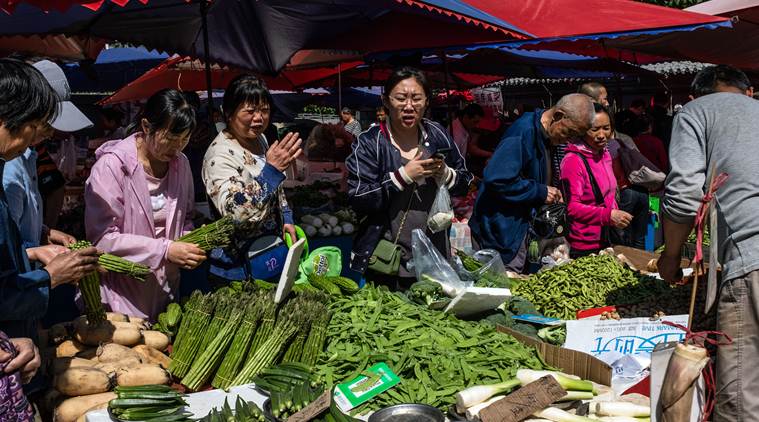
Written by Alexandra Stevenson and Keith Bradsher
Business is normally bustling at the sprawling Xinfandi produce market in southern Beijing, where stores, restaurants and thrifty shoppers buy their fruits and vegetables in bulk. But more apple sellers were napping than hustling one recent afternoon. The price of apples had nearly doubled, to roughly $1 per pound, and people were spending their money elsewhere.
“Whoever eats apples these days must be loaded,” said Li Tao, who has been selling apples for more than 20 years.
Migrant workers used to be able to afford apples, he said. “Now it’s too expensive,” Li said. Already grappling with a slowing economy and President Donald Trump’s trade war, Beijing now has to worry about the rising price of food. It is not just apples. Other fruits and vegetables are more expensive. The price of pork has jumped as the country deals with a devastating swine fever epidemic. Chicken, beef and lamb prices have been creeping up, too.
Apart from food, China does not appear to have a broader inflation problem. But rising food costs have become the talk of China. Government officials are reassuring the country that food supplies are plentiful, even as they take steps to stabilize prices.
“People and economists talk like ships in the night,” said George Magnus, an associate at the China Center at Oxford University. While overall inflation may not be high, he added, rising prices for visible goods like pork, fruit and vegetables can affect consumer spending — a potential problem for China’s economy.
Even a normally sanguine Li Keqiang, China’s premier, looked surprised on May 25 when he visited a fruit vendor in the eastern province of Shandong. “It has gone up so high?” Li said after the vendor told him that the price of his apples had more than doubled since last year.
Various forces are driving up food prices. Chinese officials are still trying to contain the outbreak of swine fever, which does not make people sick but can be fatal in pigs. More than 1 million pigs have been culled to stop the spread of the disease, though it appears to be continuing. For fruits and vegetables, Chinese authorities blame severe weather and say the price increases will be temporary.
“The prices of fruit and vegetables have caught everyone’s attention,” said Chenjun Pan, executive director of food and agriculture at RaboResearch. “Pork as well.”
Experts are also watching the spread of a pest called the fall armyworm, a sort of caterpillar that likes to eat rice, sorghum and corn crops. More than 350 square miles of crops have been ravaged, according to official news media, though the full effect on crop prices may not be felt until later in the year.
Food prices are rising at a sensitive time. President Xi Jinping has signaled tough times ahead as tensions rise with the United States. Data released on Friday suggest that a nascent economic uptick is beginning to wane and that China could slip back into a slowdown. In March, Li, the premier, acknowledged that the economy faced pressures as Beijing lowered its expectations for growth this year.
The government has long worried about inflation. It played a role in huge public protests in Tiananmen Square 30 years ago; the anniversary of the government’s violent suppression of the protests is this week. Steep inflation in the 1990s threatened to derail efforts to open the Chinese economy.
For now, the price increases appear limited to food, partly because of China’s uncertain economic situation. Rising rents have cooled to single-digit percentage growth this year. Wage increases have slowed, and unemployment is rising. At China’s factories, prices for raw materials and other goods appear tame. China still suffers from excess factory capacity in cars, steel and other industries, meaning production could quickly ramp up if prices rise.
“I don’t think inflation is a big issue for China so far,” said Yu Yongding, a prominent economist at the Chinese Academy of Social Sciences, an elite government institution in Beijing.
Chinese workers also have little leverage for seeking higher wages, another possible contributor to inflation. Job losses are already a problem among young white-collar workers as the country’s tech sector has slowed over the winter and spring.
Still, food price increases have captured the attention of Chinese households and leaders alike.
The price of pork jumped 14% in April compared with a year earlier, while broader food prices for consumers rose 6.1%, according to government statistics. Agriculture officials have warned that pork prices this year could go up by 70%. Just over a week ago, the average price of a group of seven types of fruit hit a nearly five-year high of 50 cents per pound, according to official statistics.